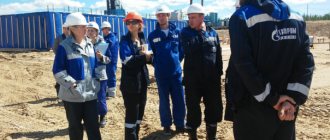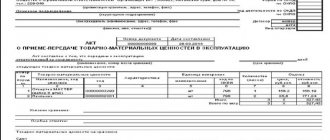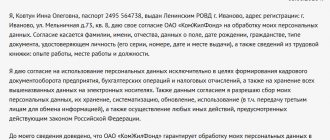Individual protection means
(
PPE ), English. Personal protective equipment
(PPE) - specially designed devices, devices, drugs, etc.
which are intended to protect humans from harmful external factors, prevent or reduce exposure to harmful and dangerous production factors, as well as to protect against pollution. They are used in cases where work safety cannot be ensured by the design of equipment, the organization of production processes, architectural and planning solutions and collective protective equipment. As a rule, personal protective equipment is used during a person’s work activity, when it is necessary to ensure protection of the skin of the body and respiratory organs from exposure to harmful toxic and polluting substances. Personal protective equipment is divided into respiratory protection equipment RPP
) and skin protection equipment.
RPE includes gas masks, respirators, cotton-gauze bandages, skin protection means - protective suits , dermatological preparations (creams, lotions, etc.). The choice of protective equipment is made taking into account their purpose and protective properties, specific environmental conditions and the nature of the infection. For example: a civilian gas mask will not help in a smoky room, because... the oxygen level in the room will be low and other sources of oxygen are needed.
Classification of PPE
The classification of PPE in Russia is established by GOST 12.4.011-89, where, depending on the purpose, they are divided into 11 classes, which, in turn, depending on the design, are divided into types:
- Isolating
suits (pneumatic suits, waterproofing
suits , spacesuits) - Respiratory protection equipment
(gas masks, respirators, self-rescuers, pneumatic helmets, pneumatic masks, pneumatic jackets) - Special protective
clothing (sheep coats,
coats , short coats, short fur coats, capes , raincoats , half-coats, gowns suits , jackets, shirts , trousers , shorts , overalls , bib overalls, vests , dresses , skirts , aprons , shoulder pads) - Foot protection
(
boots , boots with an extended shaft, boots with a short shaft, ankle boots , boots , low shoes, shoes, shoe , galoshes , boots , slippers ( sandals ), boots , boots , shin guards, over the knee boots, knee pads, foot wraps, - Hand protection
(mittens, gloves
, semi -gloves , palm pads, wrist pads, sleeve pads, elbow pads) - Head protection
(
hard hats , helmets, balaclavas, caps berets , hats, caps, headscarves , mosquito nets) - Eye protection
(
goggles ) - Face protection
(
face shields - Hearing protection
(anti-noise helmets, anti-noise earplugs, anti-noise headphones, - Fall protection equipment and other safety equipment
(safety belts, cables, hand grips, manipulators, knee pads, elbow pads, shoulder pads) - Dermatological protective products
(protective creams, skin cleansers, reparative agents) - Comprehensive protective equipment
Categories
Personal protective equipment (PPE)
Personal protection is a device designed to provide safety. Such devices are divided into those designed to protect the skin (coats, gloves and stockings, light clothing soaked in a special solution) and the respiratory system and eyes (gas masks, etc.).
For the respiratory system
Respiratory protective equipment (RPP) is a device that protects the body from toxic and harmful substances that can enter through the respiratory system. With the help of RPE, you can ensure the purification of the air entering the body.
Respiratory products
Popular RPEs are gas masks. They are divided into filtering and insulating. The effect of the former is to purify polluted air passing through the sorbent. Isolating masks completely cover the respiratory tract, eyes and face from environmental influences. Oxygen breathing occurs through special reservoirs.
There are also respirators, pneumatic masks, pneumatic helmets, and self-rescuers, which are issued for the relevant work.
The effectiveness of using RPE directly depends on the correctness of its selection and use by a specific employee. A particularly important point is the selection of the front part of the PPE, taking into account the characteristics and features of the person.
For the visual organs
Masks and goggles are used to protect the vision of working personnel. Their purpose is to protect the eyes from dust, small particles, chemicals and other hazards such as bright light, radiation, etc. Such devices include glasses, helmets, and face shields.
Eye products
Working clothes and personal protective equipment
Overalls are one part of all personal protective equipment. Workwear , like other personal protective equipment , is in demand and is applicable in many areas of production. Such professional activities include the activities of builders, installers, chemical production, heavy engineering, pharmaceutical production, metallurgy, food industry and others.
The main function of workwear is to ensure a sufficient level of labor safety, including protection from various mechanical damage. However, in addition to the main function, workwear also performs several additional ones. These include the advertising or marketing function, which is important for the operation of an enterprise. Workwear plays an important role in the prosperity of an enterprise and a certain psychological mood, in uniting the team and increasing labor productivity. That is why work shoes and work suits , as well as other types of workwear, should be selected not only based on practicality and safety, but also from the point of view of branding. As a rule, the company logo and often a slogan are applied to the workwear. For example, in the city of Lipetsk, in an auto parts store, the managers have a T-shirt that says “I know everything, ask me”
Workwear is clothing , which is designed to protect the worker from the negative effects of the production process or the environment. Workwear includes a work suit and special shoes , work gloves and a respirator , gloves or hats . Overalls must provide a certain level of protection, for example, be water-repellent, heat-resistant, hygienic (for medical staff), antistatic, etc.
Is the employer required to bear the costs?
Let us turn to the legislation, namely Federal Law No. 52-FZ of March 30, 1999. Articles 11 and 15 state that organizations are obliged to ensure the safety of their employees, as well as to implement sanitary and anti-epidemic measures in order to prevent infectious diseases. But what exactly applies to anti-epidemic measures can be read in the Resolutions of the Chief State Sanitary Doctor of the Russian Federation and temporary guidelines dated 03/03/2020, approved by the Russian Ministry of Health.
In addition to the above acts, you should also be guided by the letter of Rospotrebnadzor No. 02/3853-2020-27 dated March 10, 2020, which lists recommended preventive measures. Namely: measuring the temperature of workers, ensuring hand disinfection, cleaning premises using disinfectants, and providing workers with masks or respirators.
Accordingly, based on the listed legal norms, justified expenses of the enterprise will be the costs of purchasing masks, non-contact thermometers or thermal imagers, disinfectants for hand and office treatment, and equipment for air disinfection. But they are not mandatory for the employer.
Types of workwear
At the moment, there are a sufficient number of types of workwear. These include not only work suits , but also clothing for service sector workers, uniforms for medical staff, corporate accounting clothing, workwear for pharmacy and pharmacy store workers, robes for judges and clergy. The presence of simply a huge variety of workwear aroused genuine interest in it among modern designers, company managers and directors, who have already “tried it on”, albeit in absentia, to their employees. The purchase of corporate workwear has even become an element of a certain prestige for the company and a way to advance in the thematic market.
What are the employee's obligations?
An employee who has not been provided with a protective kit has the right not to begin performing work functions until he receives legal protection (clause 11 of the Appendix). Please note that downtime in such cases is compensated by the company.
When using protective kits, workers must know and follow the rules of use. At the end of the work shift, it is unacceptable to take them outside the territory. Exception: work is carried out at remote locations (archaeological expeditions, construction of buildings and structures, etc.). If a malfunction occurs on the protective equipment, this must be reported to your immediate superior immediately.
Basic requirements for workwear
Sewing any model of workwear begins with the selection of fabrics, determining the model, taking into account all the specifics of the work, as well as adapting the work suit to the general style of the enterprise or company. Additional processing includes applying the company's symbols or brand to a work suit , work shoes or protective equipment.
The following requirements apply to high-quality workwear:
- The quality, durability and strength of the materials from which the work suit or shoes . Any workwear should be reliable to wear: ideally, a suit should last 2-3 years and maintain a fairly decent appearance. For clothing that is used in a complex manufacturing process, tear-resistant seam threads should be used, preferably heat-resistant or reinforced threads.
- Climate compliance. The entire set of work clothing must comply with climate conditions and the season ( winter workwear , summer workwear , demi-season workwear ).
- Full compliance with the professional field and specifics of the work. Workwear should be ergonomic and comfortable to wear . For each professional application, the cut of the suit, decoration and number of pockets, fastener options, etc. are taken into account.
- Repairability and reliability. The work suit must recover well and be resistant to shrinkage or abrasion.
- Quite a high degree of hygiene. A work suit must be breathable and hygroscopic. Comfort during work and the health of the employee depend on this.
- Aesthetic appearance of workwear. Modern workers have a keen sense of the style and beauty of a work suit. Therefore, both work shoes and a suit should complement each other, harmonize in color, and be visually attractive. In this case, we are talking not only about the office version of business clothing, but also about overalls for machine operators or welders, as well as specialists in repair and construction work.
Modern materials are able to meet the requirements of workwear!
Issue norms
The employer provides staff free of charge. The procedure for the employer to provide security is established by Order No. 290N dated.
The methods and types of personal protection for workers are so diverse that personal protective equipment for the population (their classification is also a determining factor) is issued according to the standards established by Order of the Ministry of Health No. 454N.
The employer provides employees with personal protective equipment, the types and purposes of which (taking into account the format of the work performed) determine the rate of provision of the relevant items.
The norms determine the minimum level of requirements for the list of eligible funds. In this regard, the list of items provided for by the norms is to be issued in full.
If the required position title is not included in the regulations, the employer identifies those that correspond to similar professions in other industries. In the absence of information and related standards, one should act according to the standards specific to the type of work being performed.
The employer, taking into account the opinion of the institution’s trade union and the financial situation of the latter, has the right to determine higher standards for the provision of PPE, which will increase the level of protection. Such norms need to be established by a local act for the organization, taking into account:
- results of assessment of working conditions;
- opinion of the trade union.
Download
Such positions are included in the provisions for providing employees with PPE, in collective and labor agreements.
Download
Also, the manager can replace the type of PPE, which is determined by standard standards, with a similar level of protection from harmful factors (Letter of the Ministry of Labor dated No. 15-2/OOG-3519).
PPE quality control
All PPE received by enterprises is issued to employees after inspection by a commission (the composition is approved by the employer). The main task of the commission is to prevent the use of PPE :
- not corresponding to the application;
- without a certificate of conformity;
- not meeting working conditions;
- not corresponding to the markings for protective properties;
- not meeting the requirements of regulatory and technical documentation (GOST, TU, TO).
PPE is checked as it arrives at the warehouse, but no later than 10 days from the date of receipt. For inspection, the enterprise must be allocated a room with a work table and measuring instruments, normative and technical documentation, catalogs, reference books, etc. Each batch of PPE newly received at the enterprise must be subjected to an external inspection and checked for compliance with the declared range of models, sizes, heights, color, generic sign, purpose. Large batches are subject to random control, but not less than 10% of the total volume. The main feature confirming compliance of PPE with standards is a certificate of conformity and the corresponding sign, marked in accordance with GOST 50460-92. Based on the results of the PPE inspection, a report in the established form is drawn up. In cases of non-compliance, PPE must be returned to the supplier.
Standard
Of course, it won’t be possible to issue protective clothing and other protective equipment left and right; there are standards. They are determined by several basic documents (model standards) approved:
- Resolution of the Ministry of Labor No. 70 of 13/31/97 (on warm clothing).
- Order of the Ministry of Labor No. 997n dated 12/09/14 (general).
- Order of the Ministry of Health and Social Development No. 297 of April 20, 2006 (signal clothing).
Individual industries also have their own legislation, so first of all you need to check if there are any for your type of activity, and then turn to the general ones. It is allowed to establish your own standards, of course, only if this improves the situation of workers and increases security.
If you open Order No. 997, you will see that the quantity of PPE and protective clothing for an annual period is indicated, but sometimes this is not a specific number, but a mysterious phrase “before wear.” What does it mean: we write off such a product at any time when it becomes unusable? Yes and no. To begin with, you still have to pay attention to the instructions supplied with the product; it should indicate the service life, and you should focus on it (install it in the LNA).
Of course, if, for example, work boots are damaged earlier, they will also need to be replaced. An employee has the right to refuse to start work if he is not provided with protective equipment (and therefore safety precautions are not followed), and the downtime will have to be paid at full rate.
By the way! PPE must be certified and have an appropriate declaration, otherwise their use at the enterprise is unacceptable.
To write off unusable protective equipment, an act is drawn up and signed by a special commission. In some cases, it will be necessary to determine the level of wear and tear ahead of schedule, for example, if an employee quits, but did not bother to hand over the workwear (and other things) and kept it for himself. In this case, we make calculations based on the duration of use.
Example: Monter Sidorov was given a special suit - overalls and jacket - with a wear period of 1 year. The employee quit after 4 months without returning the clothes. It is necessary to calculate the degree of wear of the suit. We take a period of 12 months as 100%, then 4 months is 33.33%. It turns out that the wear rate is a little more than thirty-three percent.
Note! If an employer transfers work clothes to a dismissed employee, then this is income in kind, on which personal income tax must be withheld. If this is not possible, you need to send the appropriate certificate of Form 2-NDFL to the Federal Tax Service.
Some products require a special periodic procedure - verification. As a result, special tests are carried out (for example, this applies to dielectric gloves), and suitability for further use is established.
Rules for providing PPE at enterprises
The main legal act defining the procedure for providing workers with PPE is the Rules for providing workers with special clothing, special shoes and other personal protective equipment
, approved by Decree of the Ministry of Labor and Social Development of Russia dated December 18, 1998 No. 51. The rules provide for the provision of PPE according to Standard Standards, regardless of which sector of the economy the production belongs to, and also regardless of the form of ownership of organizations.
In some cases, in accordance with the characteristics of production, the employer may, in agreement with the state labor safety inspector and the relevant trade union body or other representative body authorized by the employees, replace one type of personal protective equipment provided for by the Standard Industry Standards with another that provides complete protection from dangerous and harmful production conditions. factors: overall can be replaced with a cotton suit or robe and vice versa, suit with overalls with a shirt (blouse) or a sundress with a blouse and vice versa, a can be replaced with a cotton suit with fire-retardant or acid-proof impregnation and vice versa, a suit can be replaced with a cotton suit with fire-retardant impregnation or water-repellent impregnation and vice versa, boots ( low boots ) - with rubber boots and vice versa, boots ( low boots ) - with tarpaulin boots and vice versa, boots - with tarpaulin boots and vice versa, a rubberized apron - with an apron made of polymer materials and vice versa, mittens - with gloves and vice versa , gloves - with gloves made of polymeric materials and vice versa, vachegi - with heat-resistant gloves made of synthetic material and vice versa, plastic oversleeves - with oversleeves made of polymeric materials and vice versa. In cases where such personal protective equipment as vest , a safety belt, dielectric galoshes and gloves , a dielectric rubber mat safety glasses and shields , a respirator , a gas mask, a protective helmet , a helmet, shoulder pads , elbow pads, self-rescuers, antiphons, plugs, noise-proof helmets, light filters, vibration-proof gloves and others are not specified in the Standard Industry Standards, the basis for the issuance of which is the certification of workplaces depending on the nature of the work performed with a wear period - until worn out or as duty workers and can be included in collective agreements and agreements. The employer is obliged to replace or repair PPE that has become unusable before the end of the wear for reasons beyond the employee’s control.
Registration in accounting
As with any other material assets, there is its own documentation for accounting for protective equipment. Let's consider step by step what needs to be formalized when moving such resources in an organization. Remember that these forms are only recommended in 2020; an enterprise has the right to develop its own forms while maintaining their mandatory details, taking into account the specifics of its work.
Receipt and transfer
In most cases, PPE comes to the company as a result of purchase from a supplier, less often in another capacity (gift, participant contribution, exchange, etc.). Accounting for them is carried out almost in the same way as for ordinary materials, taking into account some features:
- A special journal is used for accounting. It reflects basic data on the movement: to whom and when it was issued, on what basis (internal situation, order, etc.).
- A personal card is created for each employee who is supposed to be issued PPE. It indicates the parameters of workwear and shoes (size, height). Reference is also made to a specific legislative provision.
- Accounting is maintained in two separate subaccounts of account 10 “Materials” - 10.10 “Special equipment and special clothing in warehouse” and 10.11 “Special equipment and special clothing in operation.”
Upon receipt at the BU, posting D 10.10 K 60 (76) is carried out, and when transferred into operation, the service life must be taken into account, depending on it, two accounting options are possible:
- The period is less than / more than 12 months, write-off is carried out according to the usual rules (see clause 20 of the Methodological Instructions, approved by Order No. 135n dated December 26, 2002). Wiring - D 10.11 K 10.10.
- The period is less than 12 months, written off in accordance with clause 21 of the Methodological Instructions at a time upon commissioning. Wiring - D 20 (26, 23, 08, 44) By 10.10. Expenses are charged to the same accounts where the wages of workers who received PPE are accrued.
When transferring workwear to an employee, when there is a transfer of ownership, or its loss, several different situations are also possible:
- Giving. It is necessary to conclude an appropriate agreement and sign the transfer deed. The cost of used special equipment must be determined taking into account wear and tear (as we said above, for this you need to carry out a small calculation). Postings: D 73 K 10.10 (10.11) - transfer of clothing to an employee, D 91.2 K 73 - writing off the residual value as other expenses. Moreover, if the cost does not exceed 4,000, then there will be no tax consequences for the employee, provided that he did not receive other gifts during the year. Otherwise, it is necessary to calculate contributions and withhold personal income tax from the next payment (or report the impossibility of withholding tax to the Federal Tax Service).
- The employee lost the product given to him (damaged it), the employee’s guilt has been established. A written admission of guilt by the employee or a court decision is required. Postings: D 94 K 10.11 - write-off of cost, D 73.2 K 94 - write-off of shortages at the expense of the employee, D 50 (51, 70) K 73.2 - compensation for material damage received (withheld). If it was not possible to receive the money, then you will have to include such costs as other expenses - D 91.2 K 73.2 (for example, if the statute of limitations expires).
- The person responsible for the loss has not been identified. A write-off act is drawn up in the absence of the culprit. Posting: D 91.2 K 10.11 – write-off as other expenses.
To track protective equipment that is written off as a one-time expense, but at the same time has a long period of use (but less than a year), we use an off-balance sheet account established by the company itself.
Despite the established standards for use in accounting, write-offs within and above the norms do not differ in any way. Tax accounting also does not establish any special restrictions either for organizations using OSNO or for payers of a single tax using a simplified tax system – paragraphs. 3 clause 1 of article 254 of the Tax Code of the Russian Federation. We write off all expenses in full, the main thing is that the excess expenses are realistically justified.
What if the cost of special equipment exceeds 40,000 rubles for BU and 100 thousand for NU? In this case, PPE already represents fixed assets and is accounted for in account 01. On OSNO, they will be written off using the depreciation method to cost accounts (20, 26, 44, etc.), on the simplified tax system, you must be guided by clause 3 of Art. 346.16 Tax Code of the Russian Federation.
Service
Special equipment is not always easy to use; some require regular maintenance. Usually these are protective clothing, gas masks, dielectric PPE and high-altitude insurance. Types of service:
- Wash.
- Disinfection (disinfection).
- Dry cleaning.
- Verification (electrical testing).
- Purchase of consumables.
- Repair.
Service performed by third parties is reflected in the usual transactions for settlements with suppliers and contractors: D20 (25, 26...) K 60 (76). If the organization has its own workshop (laundry, repair shop): D 20 (25, 26...) K 23.
Note! All PPE that has undergone appropriate processing, including clothing, can be reused if time and condition permit. The exception is shoes, their sanitary treatment is too complicated, it is problematic to disinfect them 100%, as well as to clean them. Therefore, the residual unwritten-off cost of shoes, even if they are in good condition, remaining, for example, after an employee left, is charged to other expenses (account 91.2).
Efficiency
Based on accumulated experience, Western experts in industrial hygiene and occupational diseases believe that in the system of protection against harmful production factors, the use of PPE is the latest and most unreliable method, which should be used only when the use of more reliable methods of protection (changes in technology, automation of harmful production facilities, equipment sealing, effective ventilation, air showers, remote control, etc.) is impossible; or possible - but does not reduce harmful exposure to a safe level.
Law 426-FZ allows reducing the hazard classes of working conditions while providing workers with PPE (and maintaining exposure to harmful factors at the same level - without any improvement in working conditions); and the Social Insurance Fund compensates the employer for the purchase of PPE .
How to compile a list of occupations and positions that are eligible for the issuance of PPE
Article 221 of the Labor Code of the Russian Federation states that PPE is issued for jobs with harmful and dangerous working conditions, as well as for jobs that are performed in special temperature conditions or are associated with pollution.
It follows from this that PPE is provided not only to those who, as a result of a special assessment, were determined to have hazardous working conditions of classes 3 and 4. It is necessary to issue protective equipment (clause 3 of the Order of the Ministry of Health and Social Development of Russia dated June 1, 2009 No. 290n):
- if the employee’s work is associated with general pollution,
- if the employee is exposed to risks of mechanical damage,
- if they are identified during the special environmental control system, but are within acceptable levels that do not exceed hygienic standards.
Therefore, PPE should be issued to workers exposed to HFPF. If there is no such impact, PPE is not required to be issued.
Example
The Aurora enterprise employs truck drivers and the driver of the enterprise director. The head of the OSH service considered that a personal driver is not associated with industrial pollution; unlike truck drivers, a personal driver takes care of the car. Therefore, this employee was not given PPE. As a result of a scheduled inspection by the territorial inspection of Rostrud, a fine was established under Part 4 of Article 5.27.1 of the Code of Administrative Offenses of the Russian Federation.
To determine what specific PPE needs to be issued to employees, and whether they need to be issued PPE at all, you need to find out:
- whether it is necessary to prevent or reduce exposure to VOPF workers;
- whether protection against pollution is required for workers.
Step-by-step algorithm. To compile a list of PPE issued at the enterprise, you must complete the following steps:
Step 1 . Select standard issuance rates that correspond to the type of activity of the enterprise. ( Annex 1 )
Step 2 . Find the profession or position of the employee in the standards
Step 3 . Write down in the table all the PPE required for the employee. It is prohibited to reduce these standards
Step 4 . Transfer the table to the list of sets of workwear and safety footwear required for the employee. See a sample list here
Step 5 . Approve the list by order of the manager
Step 6 . Submit the list of PPE to the head of the department in which the employee works to draw up a personal record card for the issuance of PPE. See a sample of a completed card here
Step 7 . Fill out an application for the issuance of PPE according to your personal card, and submit the application to the warehouse. Then make sure that the PPE is issued in full and has a declaration or certificate. The declaration must be indicated for class 1 PPE, and for class 2 PPE the certificate must be indicated on the card.
Storage and care of PPE
Basic rules for caring for PPE:
- expenses entirely on the part of the company's management;
- Regular dry cleaning, washing, degassing, decontamination, disinfection and neutralization, and drying are required.
Basic rules for storing PPE:
- the use of premises that are specially equipped for storage: they must have the required temperature and moderate humidity;
- storage in a warehouse is included in the period during which they need to be used;
- it is possible to equip the premises with dryers, devices for disinfection, degassing, and decontamination;
- installation of special racks, boxes, cabinets with inscriptions in the warehouse;
- lack of direct rays of the sun;
- location of heating devices at a specified distance;
- protection from external damage.








